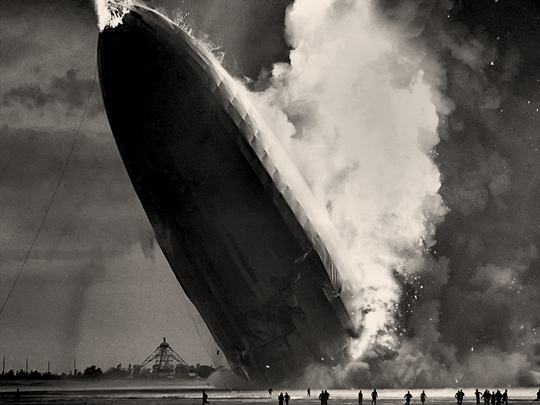Murray Becker/Associated Press / Wikimedia Commons / CC-BY-SA-3.0 / GFDL
1 – The Hindenburg Disaster
The Hindenburg disaster occurred on May 6, 1937.
The German passenger airship LZ 129 Hindenburg caught fire and was destroyed during its attempt to dock with its mooring mast at Naval Air Station Lakehurst in Manchester Township, New Jersey, United States.
Of the 36 passengers and 61 crewmen on board, 35 were killed (13 passengers and 22 crewmen). One worker on the ground was also killed.
The disaster was the subject of spectacular newsreel coverage, photographs, and Herbert Morrison’s recorded radio eyewitness reports from the landing field, which were broadcast the next day.
A variety of theories have been put forward as the cause of both the ignition and the ensuing fire.
The incident shattered public confidence in the giant, passenger-carrying rigid airship and marked the abrupt end of the airship era.
2 – Walt Disney’s First Full-Length Animated Feature, Snow White and the Seven Dwarfs, is Released
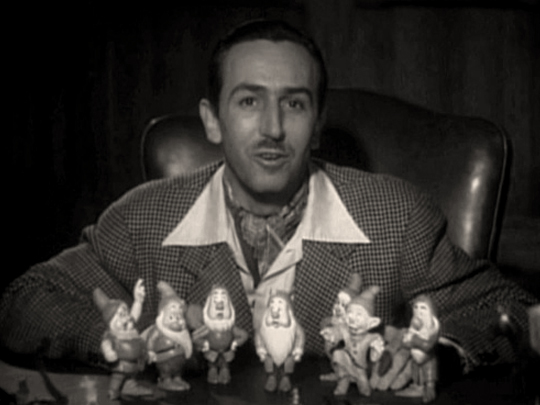
Snow White and the Seven Dwarfs is a 1937 American animated musical fantasy film produced by Walt Disney Productions and originally released by RKO Radio Pictures.
Based on the German fairy tale by the Brothers Grimm, it is the first full-length cel-animated feature film and the earliest Disney animated feature film.
Snow White premiered at the Carthay Circle Theatre on December 21, 1937, followed by a nationwide release on February 4, 1938. It was a critical and commercial success.
The popularity of the film has led to it being re-released theatrically many times, until its home video release in the 1990s. Adjusted for inflation, it is one of the top ten performers at the North American box office.
At the 11th Academy Awards, Walt Disney was awarded an honorary Oscar, and the film was nominated for Best Musical Score the year before.
In 1989, the United States Library of Congress selected it for preservation in the National Film Registry. It is ranked in the American Film Institute’s list of the 100 greatest American films.
3 – German Luftwaffe Destroys Basque Town of Guernica
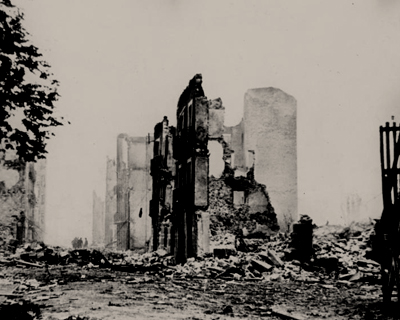
The bombing of Guernica on 26 April 1937, was an aerial bombing of the Basque town of Guernica during the Spanish Civil War.
The bombing is also the subject of a famous anti-war painting by Pablo Picasso.
It was carried out at the behest of the Spanish nationalist government by its allies, the Nazi German Luftwaffe’s Condor Legion and the Fascist Italian Aviazione Legionaria, under the code name Operation Rügen.
The bombing is considered one of the first raids on a defenceless civilian population by a modern air force.
However, under the international laws on aerial warfare at the time, Guernica was considered a legitimate military target as it was being used as a communication centre near the front line.
The number of victims is still disputed, with the Basque government reporting 1,654 killed, while Spanish figures claim around 126 killed, later revised by the authors of the study to 153.
English sources claim 400 civilians died, while Russian archives reveal 800 deaths on May 1st, 1937, but this number may not include victims who later died of their injuries in hospitals or whose bodies were discovered buried in the rubble.
4 – Amelia Earhart and Co-Pilot Fred Noonan Vanish Over the Pacific Ocean
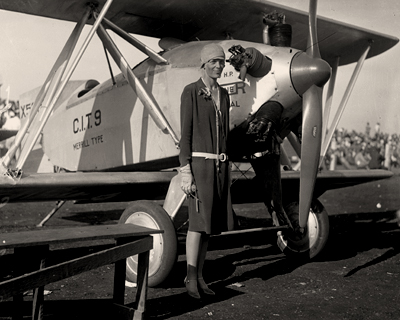
On July 2, 1937, the aircraft carrying American aviator Amelia Earhart and navigator Fred Noonan was reported missing near Howland Island in the Pacific Ocean.
They were attempting to fly around the world when they lost their whereabouts during the most difficult part of the journey.
This was the trip from Lae, New Guinea, to Howland Island, a tiny island 2,227 nautical miles away, in the middle of the Pacific Ocean.
The U.S. Coast Guard cutter ‘Itasca’ was in sporadic radio contact with Earhart as she approached Howland Island and received messages that she was lost and running low on fuel.
It is supposed she probably tried to ditch the Lockheed in the ocean soon after.
No trace of Earhart or Noonan has ever been found.
5 – The Second Sino-Japanese War
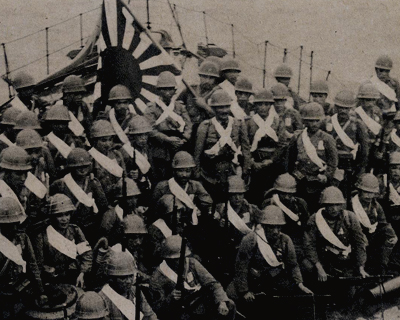
The Second Sino-Japanese War from July 7, 1937, to September 9, 1945, was a military conflict fought primarily between the Republic of China and the Empire of Japan from 1937 to 1945. It followed the First Sino-Japanese War of 1894–95.
China fought Japan, with economic help from Germany, the Soviet Union, and the United States.
After the Japanese attack on Pearl Harbor in 1941, the war merged into the greater conflict of World War II as a major front of the Pacific War.
The Second Sino-Japanese War was the largest Asian war in the 20th century.
It accounted for the majority of civilian and military casualties in the Pacific War, with anywhere between 10 and 25 million Chinese civilians and over 4 million Chinese and Japanese military personnel dying from war-related violence, famine, and other causes.
The war was the result of a decades-long Japanese imperialist policy aimed at expanding its influence politically and militarily in order to secure access to raw material reserves and other resources, particularly food and labor.
Prior to 1937, China and Japan fought in small, localized engagements, so-called ‘incidents’.
The last of these incidents was the Marco Polo Bridge Incident of 1937, which marked the beginning of total war between the two countries.


